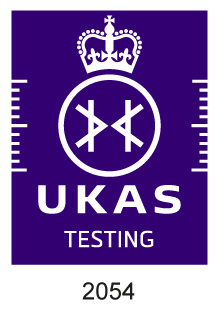Menu
close
**LATEST** New quantitative face fit services for RPE
Book in today

Asbestos projects can bring unique challenges and areas of difficulty. Our project managers ensure the whole process runs smoothly, planning for each individual project, taking into consideration the safety, risk, operational requirements and budgetary constraints.
Our experience can save you money, whilst ensuring your project follows all relevant health and safety regulations, operational and programme requirements.
Pre-removal phase:
Removal phase:
Asbestos is a naturally occurring fibre that was widely used in construction and other industries until the late 1990s. The three types of asbestos fibres most used in the UK are: blue (crocidolite), brown (amosite) and white (chrysotile)
Before its dangers were known, asbestos was often used in buildings for insulation, flooring, roofing, and was sprayed on ceilings and walls. Its use is now banned in the UK, but buildings constructed before the year 2000 may still have asbestos in them. Materials containing asbestos are referred to ‘ACMs’ (asbestos containing materials). Asbestos can also be found in soils, where ACM waste has been disposed.
If asbestos inside buildings remains intact, it poses very little risk. It’s only when it’s damaged or disturbed that tiny asbestos fibres can be released into the air and enter your lungs when breathing. Breathing in asbestos fibres can significantly damage your lungs and their lining. The symptoms of asbestos-related conditions take many years – even decades – to appear after the original exposure to asbestos. This means that exposure a long time ago might only show up as a condition today.
UK law is very strict about managing ACMs (asbestos containing materials). It is heavily regulated to ensure best practice and safety of anyone who may come into contact with it. The Duty to Manage Asbestos is the responsibility of the Duty Holder and the guidelines are included in the Control of Asbestos Regulations 2012 (CAR 2012). The Regulations set out your legal duties and the ACOP and guidance give practical advice on how to comply with those requirements. Download the CAR 2012 regulations from our resource library.
The Duty Holder is the owner of the non-domestic premises or the person or organisation that has clear responsibility for the maintenance or repair of non-domestic premises.
The Duty Holder is required to manage the risk from asbestos by:
1. Finding out if there is asbestos in the premises, its location and what condition it is in.
2. Keeping an up-to-date record of the location and condition of the ACMs.
3. Assessing the risk from the material
4. Preparing a detailed plan of how the ACMs risks will be managed
5. Taking steps to put the plan in action
6. Reviewing and monitoring your plan
7.Having a system to inform others about the location and condition of ACMs
There are 2 main types of survey: Asbestos Management Surveys and Asbestos Refurbishment/Demolition Surveys.
A management survey will be required during the normal occupation and use of the building to ensure continued management of the ACMs in situ. As part of your management plan re-inspection surveys will be carried out. These are periodic condition inspections that checks for any deterioration of ACMs caused by natural degradation, accidental damage or poor removal practice.
A refurbishment/demolition survey will be necessary when the building (or part of it) is to be upgraded, refurbished or demolished.
Regulation 4, CAR 2012 stipulates that the duty holder manages the risk of from asbestos by finding out if there is asbestos in the premises, its location and what condition it is in. It also allows social housing providers to comply with risk assessments as outlined in Regulation 5, CAR 2012. An asbestos survey will provide sufficient information for: an asbestos register and plan to be prepared, a suitable risk assessment to be carried out and a written plan to manage the risks to be produced.
Every survey is unique, depending on its purpose and the size, usage and lifespan of the premises. We work with our clients to provide a tailored service specific to their needs. Generally, here’s what to expect during an AEC survey:
Management surveys and Re-inspection surveys are less intrusive than a refurbishment/demolition survey. The surveyor will use plans/maps of your building to identify the location of suspected ACMs, they will take photographs to show the condition of the materials and record all their findings. The surveyor will not disturb any suspected asbestos other than take a small representative sample (typically no bigger than 1cm2). In the case of any area being inaccessible the surveyor will record ‘presumed’ asbestos. Any material samples will be securely contained and labelled on site before being transferred to our laboratory for analysis.
Refurbishment and demolition surveys are more intrusive surveys. The surveyor will work alongside your development plans to inspect areas to identify any ACMs that may be disturbed throughout refurbishment works. In the case of demolition, the whole building will be surveyed. The surveyor will access all areas of the building marked for demo/refurbishment (such as floor coverings, above false ceilings, lofts, inside risers, service ducts, lift shafts, underground rooms, and under crofts). This will also involve sampling any areas that were ‘presumed’ asbestos in other less intrusive surveys. The surveyor will not disturb any suspected asbestos other than take a small representative sample (typically no bigger than 1cm2). Specialist surveyors trained to work at height and in confined spaces will carry out surveys in ‘hard to reach’ areas, and it may involve using specialist access equipment. Any material samples will be securely contained and labelled on site before being transferred to our laboratory for analysis.
Asbestos air monitoring (also known as asbestos air testing) is a requirement of the Control of Asbestos Regulation (CAR 2012) . Its purpose is to monitor fibre levels during the asbestos removal process or if an ACM has been disturbed. It is essential during asbestos four-stage clearances, leading to a certificate of reoccupation. Analysts use specialist equipment to monitor the air and work in accordance with HSE regulations and guidance HSG 248 ‘The Analysts Guide For Sampling, Analysis and Clearance Procedures’.
Our clients benefit from AEC’s online portal. Available 24/7 all your records are contained in an easy-to-use management system. You can view all your sites survey data, risk items and action plans in real time. View AEC’s Client Portal here.
UKAS is the National Accreditation Body for the United Kingdom. They assess and accredit organisations that provide services including certification, testing, inspection and calibration. UKAS accreditation ensures the highest levels of impartiality and competence through a continuous assessment process. This allows clients to have confidence in the quality of services provided. View our UKAS accreditations here.

